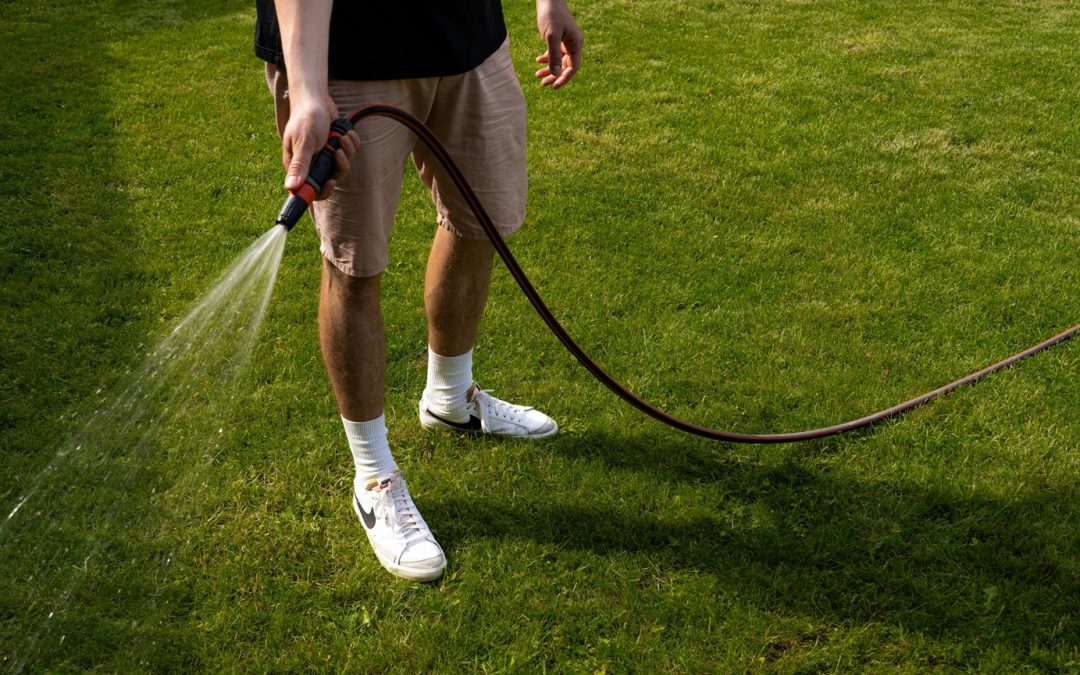Hydroseeding has become a popular and efficient way to grow lush, green lawns. This method involves spraying a mix of seeds, mulch, and nutrients onto prepared soil, giving new grass a strong start. It’s favored for its quick application and even seed distribution, unlike traditional seeding methods. Proper watering is a must in this process, making it important for both amateur gardeners and professional landscapers.
In this article, we will cover the best watering practices for hydroseeding. We’ll discuss the vital first 48 hours and how to set up a long-term watering schedule. Additionally, we’ll explain how weather affects watering and share tips utilized by a hydroseeding company to avoid common mistakes. This guide will provide you with the knowledge to help your hydroseeded lawn thrive.
An Overview of Hydroseeding
Hydroseeding is an advanced method for planting lawns that involves spraying a mixture of seeds, mulch, and nutrients directly onto the soil. This technique has many advantages, including fast and even seed distribution, which is often better than traditional methods. The mulch in the mix helps retain moisture, protects the seeds from erosion, and creates a good environment for them to grow.
The added nutrients give the young plants a strong start. Unlike traditional seeding, which can take multiple steps and more time, hydroseeding does it all in one quick application. This makes it a great choice for both residential lawns and larger commercial or public areas where efficiency and effectiveness are important.
Initial Watering: First 48 Hours
The first 48 hours after hydroseeding are vital for seed germination. During this time, keep the soil consistently moist to help the seeds absorb water. This moisture allows the seeds to swell and soften, which is essential for germination.
To do this, water lightly but often, keeping the soil damp but not soaked. This prevents the seeds from drying out and avoids problems like soil erosion or seed displacement. Closely monitoring moisture levels during these first two days lays a strong foundation for your lawn’s growth.
Establishing a Watering Schedule
After the first 48 hours, it’s important to set up a regular watering routine for your hydroseeded lawn. These lawns need special care during their early growth to stay healthy. For the first two weeks, water the lawn twice a day—once in the early morning and once in the late afternoon. This timing helps keep the soil moist while reducing evaporation. Each watering session should keep the top inch of soil damp but not soaked.
As the grass grows and roots establish, gradually reduce watering to once a day, then to every other day. Keep an eye on the soil’s moisture and adjust based on the weather and soil condition. Too much water can cause soggy soil and root rot, while too little can slow down grass growth. A balanced watering schedule will help your lawn grow lush and strong.
Adjusting for Weather Conditions
Adjusting your watering habits based on the weather is important for a healthy hydroseeded lawn. When it rains, reduce watering to avoid oversaturation, which can cause seed washout and waterlogged soil. During droughts, water more frequently to keep the soil consistently moist and prevent seeds from drying out and failing to germinate.
In extreme heat, water during the cooler parts of the day—early mornings or late evenings—to maximize absorption and reduce evaporation. By watching the weather and changing your watering routine as needed, you can help your hydroseeded lawn stay healthy and resilient.
Avoiding Common Watering Mistakes
Improper watering can harm your lawn. Overwatering is a common mistake that can wash away seeds and cause mold. Too much water can move seeds from their spots, leading to uneven growth, and mold can smother young roots. On the other hand, underwatering can hinder root growth, making grass weaker and more prone to stress and disease. Shallow roots result from lack of deep watering. To avoid these issues, keep the soil consistently damp but not soaked, adjust your watering based on the weather, and follow a careful watering routine to maintain a healthy lawn.
Watering your lawn incorrectly can lead to several problems. Overwatering can wash away seeds and create mold. Excessive water can move seeds, causing uneven growth, and mold can choke young roots. Underwatering can stunt root growth, making grass weaker and more vulnerable to stress and disease. Shallow roots result from insufficient deep watering. To avoid these issues, keep the soil consistently damp but not soaked, adjust your watering based on the weather, and follow a careful watering routine to maintain a healthy lawn.
Hydroseeding offers a quick and effective solution for establishing lush, green lawns. By understanding and implementing proper watering practices, you can ensure your hydroseeded lawn thrives. The first 48 hours require consistent moisture to aid seed germination. Establishing a regular watering schedule and adjusting for weather conditions are vital for long-term success. Avoid common mistakes like overwatering and underwatering to prevent seed displacement and root issues. With careful attention and a balanced approach, your hydroseeded lawn will grow strong and healthy, providing a beautiful and resilient green space.
Photo by Anastasiya Badun: https://www.pexels.com/photo/legs-of-a-man-watering-plants-in-the-garden-18241288/

Recent Comments